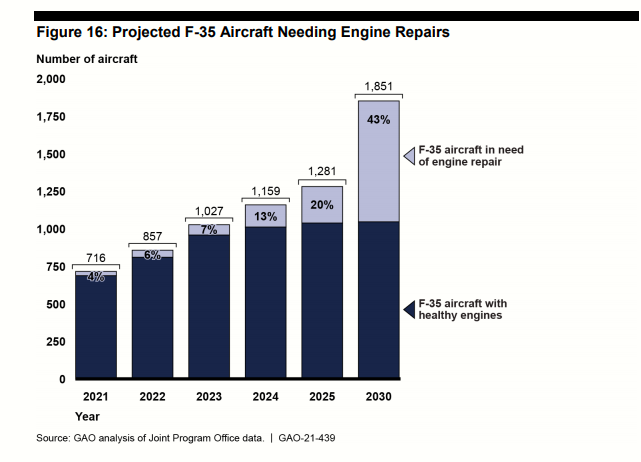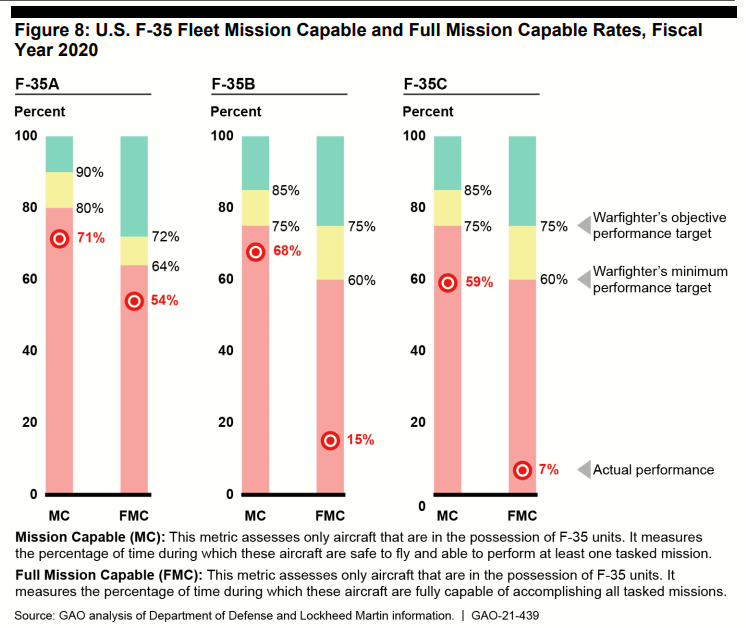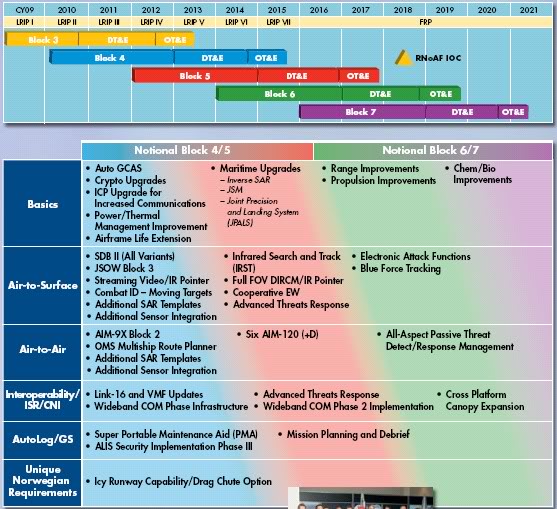Latest Thread
You are using an out of date browser. It may not display this or other websites correctly.
You should upgrade or use an alternative browser.
You should upgrade or use an alternative browser.
TR Turkiye's F-35 Project and Discussions
- Thread starter Blackeyes90
- Start date
S
Sinan
Guest
Now, we have been kicked out of F-35 program, well known AKP supporters of this forum, begin to diss F-35.
While we remember well how back in the days on the propaganda defense compilations on YouTube they were wetting their pants that Turkey is getting the planes.
The story about the fox and the grapes... When the fox couldn't reach it she was telling that it is bitter anyway.
The story about the fox and the grapes... When the fox couldn't reach it she was telling that it is bitter anyway.
If you mean me by these statements, I have opposed the purchase of the F-35 since I entered the forums.Now, we have been kicked out of F-35 program, well known AKP supporters of this forum, begin to diss F-35.
S
Sinan
Guest
Why you are against F-35, i would very like to discuss this issue thoroughly.If you mean me by these statements, I have opposed the purchase of the F-35 since I entered the forums.

According to a July 2021 report by the U.S. Accountability Office, 43% of the F-35 fighter jets that will enter the Army inventory will have to send their engines for repair by 2030. We're talking about 1851 aircraft here. Page 36
Here's one of the places where the extra $ 4 billion mentioned above will go will be this black hole.

Again, according to the GAO, the B and C models of the F-35 fighter aircraft remained in the class in terms of their ability to perform all the tasks they came out of. The F-35B was only able to perform 15% of its missions. If F-35C, however, remained at 7%. Page 21
If we were to buy an F-35C, we wouldn't even be able to get the plane out of the hangar. Let the ears of friends who said that we could not find a better plane for TCG Anatolia ring. We were going to spend money like crazy to keep a plane ready for war that even the Americans couldn't handle.
Last edited:
F-35 fighter costs are out of control, GAO says
The failure to control F-35 aircraft cost overruns should force the Pentagon to scale back its fleet of advanced warplanes unless it can find new savings, a government watchdog agency report said.The development of the advanced F-35 fighter, the most costly weapon system in Defense Department history, has faced steadily rising costs for years. And while the military has tried to reduce expenses, those efforts “have produced limited results,” the Government Accountability Office report released Wednesday said.
“DOD’s inability to arrest the increases in F-35 sustainment costs and make progress towards the services’ established affordability constraints is due in part to the department’s not having a clear, strategic approach across the F-35 program,” the GAO said.
About 400 F-35s are already in service, making the aircraft a growing portion of the Pentagon’s tactical fleet.
The Pentagon plans to procure nearly 2,500 F-35s with an estimated life cycle cost exceeding $1.7 trillion, the GAO said. About $1.3 trillion of those costs are related to operating and sustaining the aircraft. The projection reflects an increase of more than $150 billion over 2012 estimates, the GAO said.
It is also billions more than the services can afford, making current plans unsustainable, the GAO said.
“We recommended, among other things, that Congress consider making future F-35 acquisitions contingent on progress reducing sustainment costs,” it said.
The GAO also recommended that Congress require the Pentagon to report annually on progress in meeting cost constraints and develop an affordable plan to sustain the future F-35 fleet.
The Air Force faces the greatest challenge in cutting costs. It is purchasing about 70% of the F-35s and must slash what it spends on each plane by 47%, or the readiness of its squadrons could be “negatively impacted,” the GAO said.
Even if the Air Force acquired all of its spare F-35 parts for free over the next few decades, it would still fall considerably short of that cost-cutting goal, the report said.
The F-35 program has faced problems and delays from the beginning. Many of the aircraft remain unable to carry out a full range of missions, the report said.
Between 2019 and 2020, the U.S. F-35 fleet’s average annual mission capable rate — the percentage of time during which the aircraft can fly and perform one of its tasked missions — improved from 59% to 69%. Its full mission capable rate improved from 32% to 39%.
“F-35 mission capable rates ... have recently improved, but still fall short of warfighter requirements,” the GAO said.
The Defense Department partially concurred with the GAO recommendations in a written response included with the report. The Pentagon is updating an affordability strategy document that would span the expected life cycle of the F-35 and review cost-cutting constraints.

F-35 fighter costs are out of control, GAO says
If f35 is overall that good there would not be announced various modernisations programs of current platforms recently. F35 will not be usa airforce backbone ever, one of the best things that happened to TAF and Turkey that you are spared of that Troyan horse and by that went with your own way.
You need to understand what the F35 embodiesWhy you are against F-35, i would very like to discuss this issue thoroughly.
What did the participating countries want from the F35 program ?
The main task of the F35 program is to produce the fifth generation version of the F16
The F16 being one of the most cost-affordable, cheap, effecient planes that can perform several air to land roles at low costs became the backbone of several countries as its maintenance cost is pure nothing
What came from the F35 program is a plane that is just like a Ferrari. You cant expect the military to employ a Ferarri-like plane on every sortie mission just because it is stealthy to a certain degree. This isnt how the military works. The military searches for cost-effecient, effective, and reliable solutions
I would prefer to buy a F22 raptor rather than F35. At least it has air superiority and doesnt suffer the many setback that the F35 does
And what makes you think that the F35 turkey would get would be useful, Israel reportedly announced that the USA already supplied them with anti-f35 mechanism long ago. Moreover, depending on such planes is a trap by itself as the USA can just negate the activation codes whenever you are against them, making 100 million dollars planes just some pile of steel on the ground
S
Sinan
Guest
I think likewise.You need to understand what the F35 embodies
What did the participating countries want from the F35 program ?
The main task of the F35 program is to produce the fifth generation version of the F16
The F16 being one of the most cost-affordable, cheap, effecient planes that can perform several air to land roles at low costs became the backbone of several countries as its maintenance cost is pure nothing
What came from the F35 program is a plane that is just like a Ferrari. You cant expect the military to employ a Ferarri-like plane on every sortie mission just because it is stealthy to a certain degree. This isnt how the military works. The military searches for cost-effecient, effective, and reliable solutions
I would prefer to buy a F22 raptor rather than F35. At least it has air superiority and doesnt suffer the many setback that the F35 does
And what makes you think that the F35 turkey would get would be useful, Israel reportedly announced that the USA already supplied them with anti-f35 mechanism long ago. Moreover, depending on such planes is a trap by itself as the USA can just negate the activation codes whenever you are against them, making 100 million dollars planes just some pile of steel on the ground
But there is only 5th Generation Fighter Jet in the world. Maybe we should have decreased our order from 100 to 20. Imagine how much these planes would give us advantage in a possible conflict with Syria.
Not reallyI think likewise.
But there is only 5th Generation Fighter Jet in the world. Maybe we should have decreased our order from 100 to 20. Imagine how much these planes would give us advantage in a possible conflict with Syria.
Erdo would never go against the russians, not only due to the cheap gas, but also because erdo is recieving nuclear technology from russia
Russia is a beautiful card to have for now
Iam actually quite happy that turkey went out of the f35 program. After you guys did, turkey started searching for new possibilities such as flying drones and hurject from a helicopter ship. These are good things you know. Certainly it takes time but you guys will eventually reach it as long as the west doesnt control the internal politics of the country
It is just that the f35 fanboys cant accept that turkey went out and that is it
it doesn't stand a chance against autonomous (AI) fighter jets. we will see them in the air in the next 15-20 years. 20 years is a very short time for this industry.F35 is becoming more like the F22.
An elite jet fighter not a work horse like the F15 and the F16.
They asked me when film photography will turn into digital and I said 20 years, it just took 5 years.it doesn't stand a chance against autonomous (AI) fighter jets. we will see them in the air in the next 15-20 years. 20 years is a very short time for this industry.
Last edited:
it doesn't stand a chance against autonomous (AI) fighter jets. we will see them in the air in the next 15-20 years. 20 years is a very short time for this industry.
Honestly as much as I like the F35 especially the F35B. Im not losing sleep over it like a lot of F35 fanboys.
F35 is not a wonder weapon that is going to destroy everything
Warfare has never been about one weapon.
There are many modernization programs:If f35 is overall that good there would not be announced various modernisations programs of current platforms recently.

F35 will not be usa airforce backbone ever,
There is no any doubt it will be. Current USAF strike and fighter jet inventory (including A-10) is about 2000. 1763 F-35A were ordered by USAF. Even of order is reduced, it wont be something drastic.
Recent Swiss choice only confirms that F-35 is best jet on market.
no, usa will go for vi gen fighter with full force, propably unmanned, partially because of money which is already explained and what is more important f35 is already obsolete in many ways and does not guarantee air supremacy vs china and russia.There are many modernization programs:

There is no any doubt it will be. Current USAF strike and fighter jet inventory (including A-10) is about 2000. 1763 F-35A were ordered by USAF. Even of order is reduced, it wont be something drastic.
Recent Swiss choice only confirms that F-35 is best jet on market.
You need to understand what the F35 embodies
What did the participating countries want from the F35 program ?
The main task of the F35 program is to produce the fifth generation version of the F16
The F16 being one of the most cost-affordable, cheap, effecient planes that can perform several air to land roles at low costs became the backbone of several countries as its maintenance cost is pure nothing
What came from the F35 program is a plane that is just like a Ferrari. You cant expect the military to employ a Ferarri-like plane on every sortie mission just because it is stealthy to a certain degree. This isnt how the military works. The military searches for cost-effecient, effective, and reliable solutions
F-16 block 60 is not cheaper than F-35A, but much less potent.
I would prefer to buy a F22 raptor rather than F35. At least it has air superiority and doesnt suffer the many setback that the F35 does
F-22 is two times more expensive than F-35 and far behind in strike capabilities. No wonder that F-22 will be phased out while F-35 continue to serve for decades.
There is no such thing.And what makes you think that the F35 turkey would get would be useful, Israel reportedly announced that the USA already supplied them with anti-f35 mechanism long ago.







